 When I first saw the eggs for this insect, I assumed that they were for a butterfly as they do look like that. However, when they hatched out, there were little things crawling around and they were so small that I couldn't tell whether they had six legs or eight.
When I first saw the eggs for this insect, I assumed that they were for a butterfly as they do look like that. However, when they hatched out, there were little things crawling around and they were so small that I couldn't tell whether they had six legs or eight.
So, now being absolutely certain that I didn't know that I was looking at, I looked around the web and eventually found out that they were Green Shield Bugs. These hatch out from their eggs into little 'nymphs' which eat and grow and shed their skin several times. I couldn't really see any site on the Internet that had photographs of all of the stages so I thought that I might take my own. Below, you can see the stages at their actual size (on a monitor or printout at roughly 96 to 100 dpi). On the image above/right, you can put a ruler up against the screen/paper to check the cm/mm divisions for yourself.

I liberated the hatchlings into our back garden and at regular(ish) intervals, went and found them, collecting images at each stage of their development - hopefully, I haven't left out/missed one of the stages (although there does seem to be a bit of a size gap between the 3rd and 2nd from the right, or ... well, I didn't have them in a jar on the desk so I don't know. Maybe next year...). So, here are the stages...

 This is the egg of this little beastie. It is around 1mm across and they are laid in a triangular/hexagonal pattern. I picked these off the corner of a bed sheet and put them in a jar.
This is the egg of this little beastie. It is around 1mm across and they are laid in a triangular/hexagonal pattern. I picked these off the corner of a bed sheet and put them in a jar.

 This is the empty egg shell. Note the little black lambda on it.
This is the empty egg shell. Note the little black lambda on it.

 And these are the hatchlings - definately the first stage. The colouration is an orangey red with black.
And these are the hatchlings - definately the first stage. The colouration is an orangey red with black.
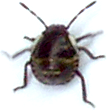
 This is definately the next stage. The colour is an intermediate between green and the orangey red.
This is definately the next stage. The colour is an intermediate between green and the orangey red.

 And this is definately the third stage and, the colour has gone completely over to the green colour that it will keep now.
And this is definately the third stage and, the colour has gone completely over to the green colour that it will keep now.
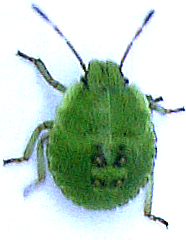
 This is the next stage at the same magnification (they are all at roughly the same magnification as I used as close to the same configuration as I could each time). You can see now that we have a change of theme - abandoning the ladybird like hard shell appearance and going over to an all-green appearance with a more matt shell. I don't know if the shell is softer or not but it looks it.
This is the next stage at the same magnification (they are all at roughly the same magnification as I used as close to the same configuration as I could each time). You can see now that we have a change of theme - abandoning the ladybird like hard shell appearance and going over to an all-green appearance with a more matt shell. I don't know if the shell is softer or not but it looks it.
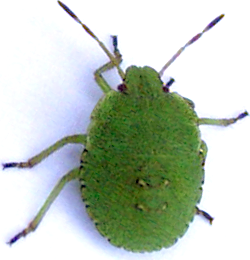
 And the next. It has lost the black or dark bits around the four 'things' in the middle of its back.
And the next. It has lost the black or dark bits around the four 'things' in the middle of its back.
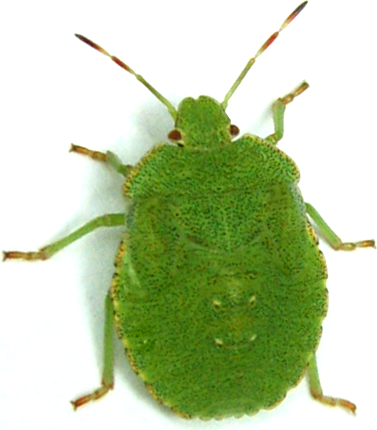
 This is probably the next although it could be a larger version of the previous one (I'll have to keep them captive next year). Note that you can see what looks like the wings starting to form under its back.
This is probably the next although it could be a larger version of the previous one (I'll have to keep them captive next year). Note that you can see what looks like the wings starting to form under its back.
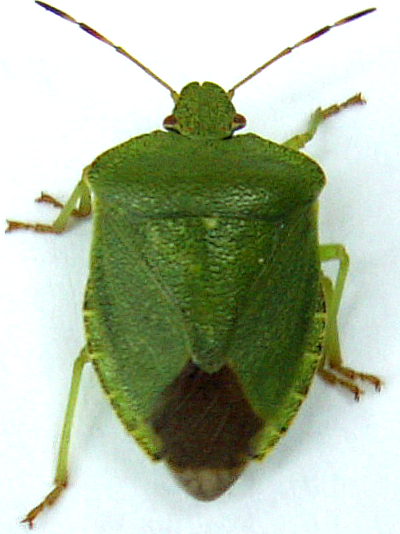
 And finally, this is the winged version ready to fly off and make the next generation.
And finally, this is the winged version ready to fly off and make the next generation.
All of these are at the same scale, going from roughly 1mm across for the egg to roughly 14mm long for the adult.